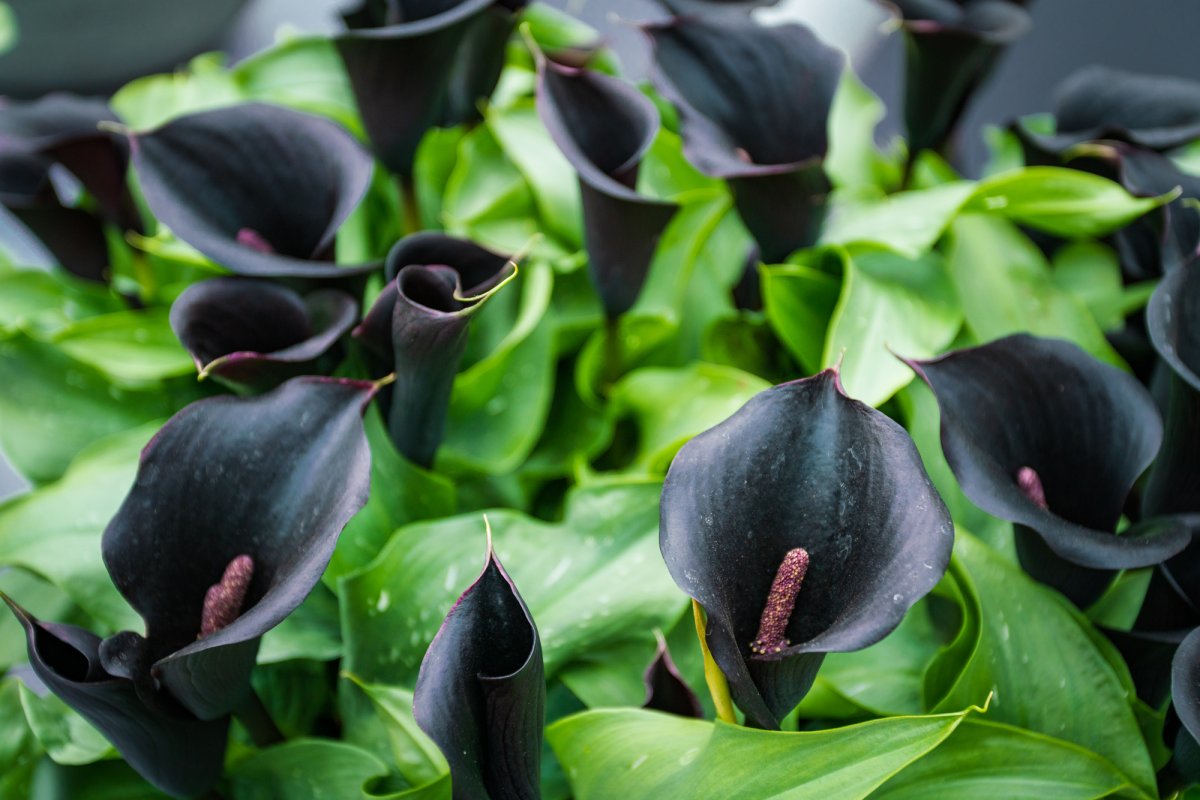We may earn revenue from the products available on this page and participate in affiliate programs. Learn More ›
Cheery yellow, pink, and purple flowers have their charms. But if you’ve ever dreamed of growing gothic garden plants or want to complement the rich paint colors of a Victorian home, growing a few nearly black plants or a monochromatic garden filled with different types of black flowers can give your outdoor space the dramatic flair you crave. Although naturally black flowers are rare, the plants in this list have such deep and dark petals they look black in most light, making them perfect for an edgy garden.
1. Violas and Pansies (Viola spp.)
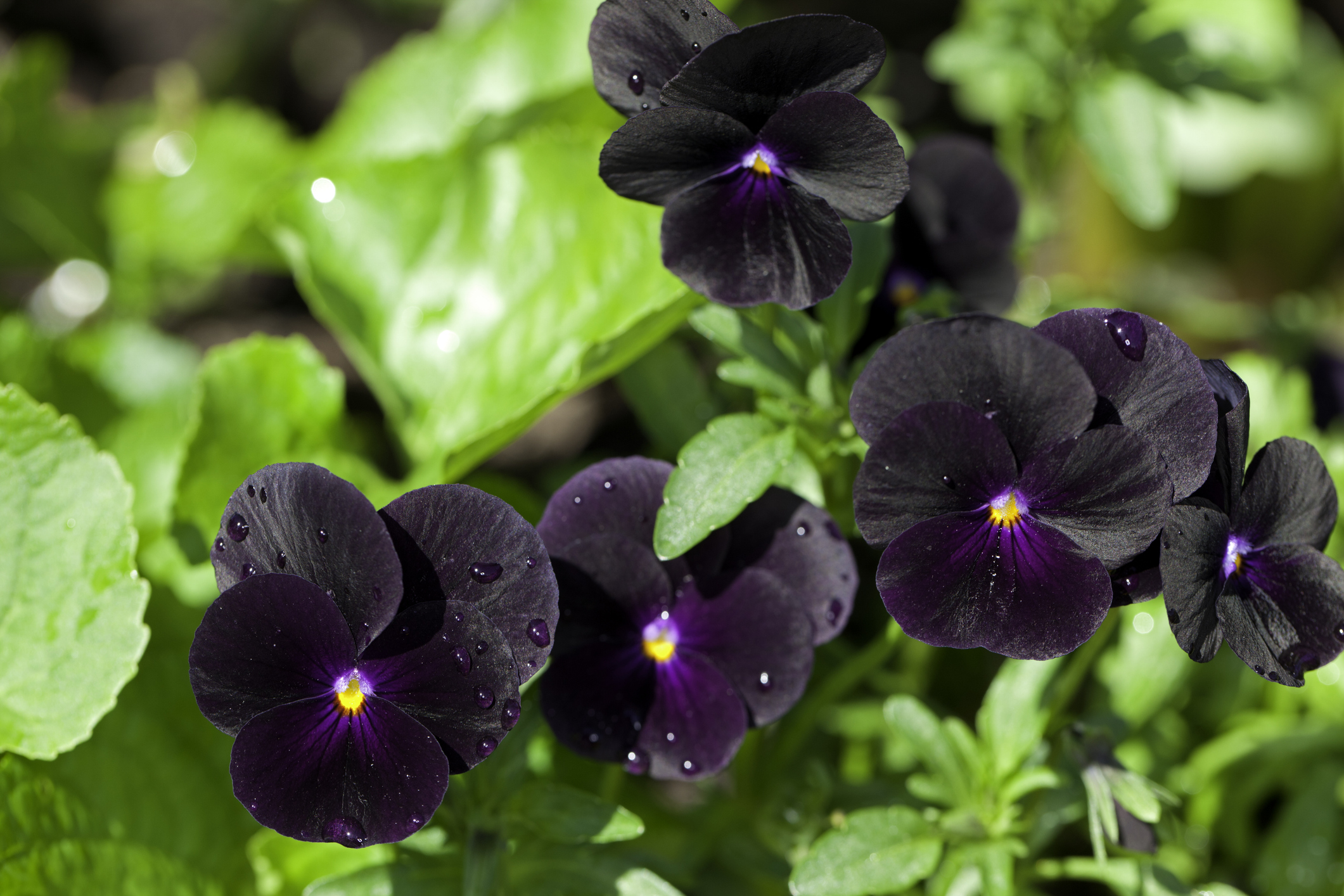
If you’re looking for dark flowers for containers and garden borders, violas and pansies are hard to beat. These plants both belong to the Viola genus; however, pansies have slightly larger petals, while violas are a bit hardier. Cultivars like ‘Molly Sanderson’ violas or ‘Black Beauty’ pansies are reliable bloomers, but they’ll flower even better with garden fertilizer and regular deadheading.
Best For: Garden borders, containers
Hardiness Zones: Typically grown as annuals in zones 3 to 9
2. Tulips (Tulipa spp.)

“Some of the most striking, dark-colored flowers can be found in a number of tulip bulbs, like ‘Queen of the Night’ and ‘Black Parrot,’” says Ward Dilmore, a landscape designer and co-founder of Petrus Landscaping in Menlo Park, California.
Dilmore notes that a mass planting of dark tulips makes a unique statement in the garden, but these spring flowers can be interplanted with other black flowering plants as well.
Best For: Mass plantings, containers
Hardiness Zones: 3 to 7
3. Hollyhocks (Alcea rosea)
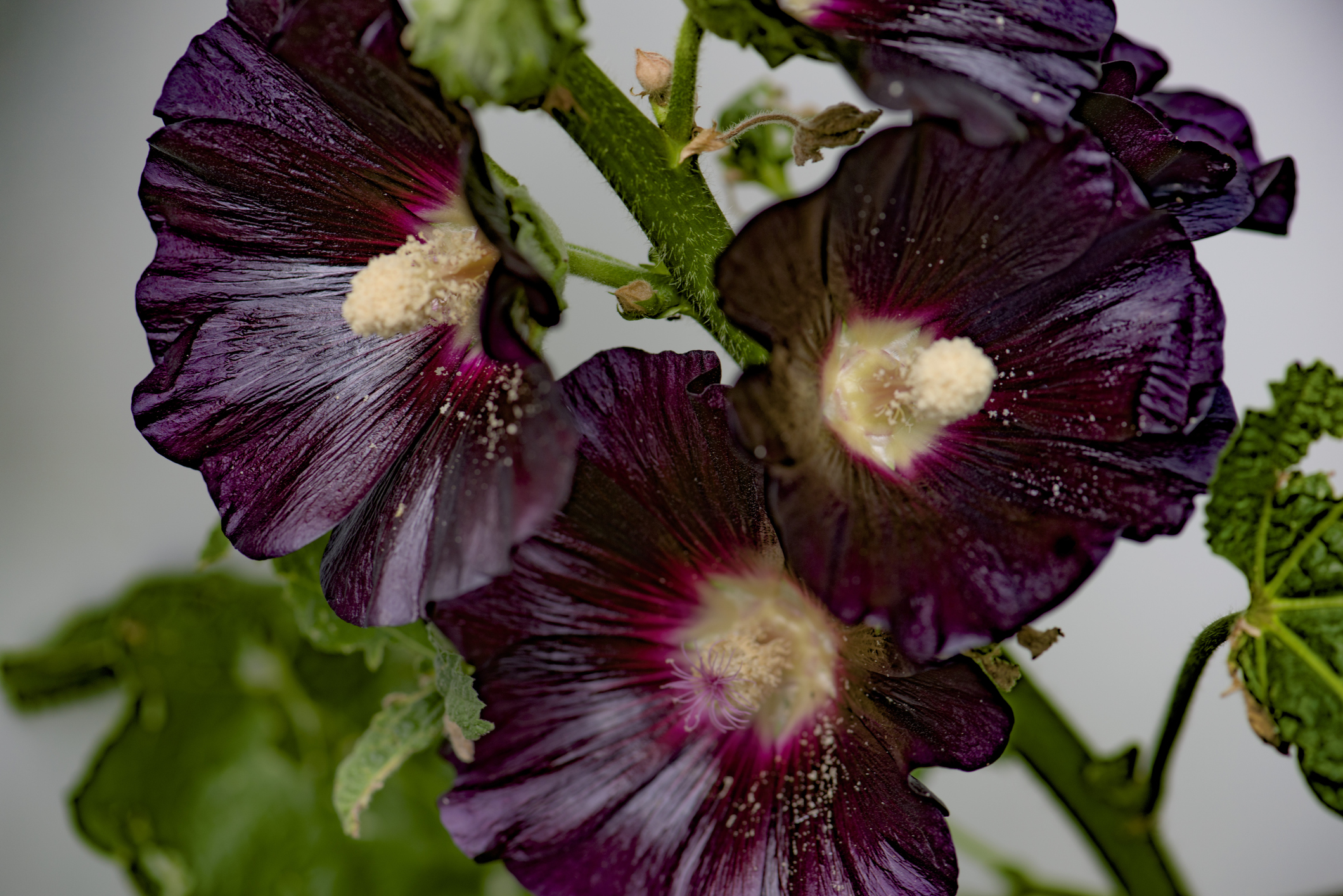
When most people think of hollyhocks, they envision old-fashioned flowers that are right at home in cottage gardens. But the rare black color flowers of dark beauties like ‘Jet Black’ hollyhocks give these garden classics an unexpectedly modern feel. Just keep in mind that most hollyhocks are biennials and they don’t flower until their second year.
Best For: Cottage gardens, backdrop plants
Hardiness Zones: 3 to 8
4. Petunias (Petunia spp.)
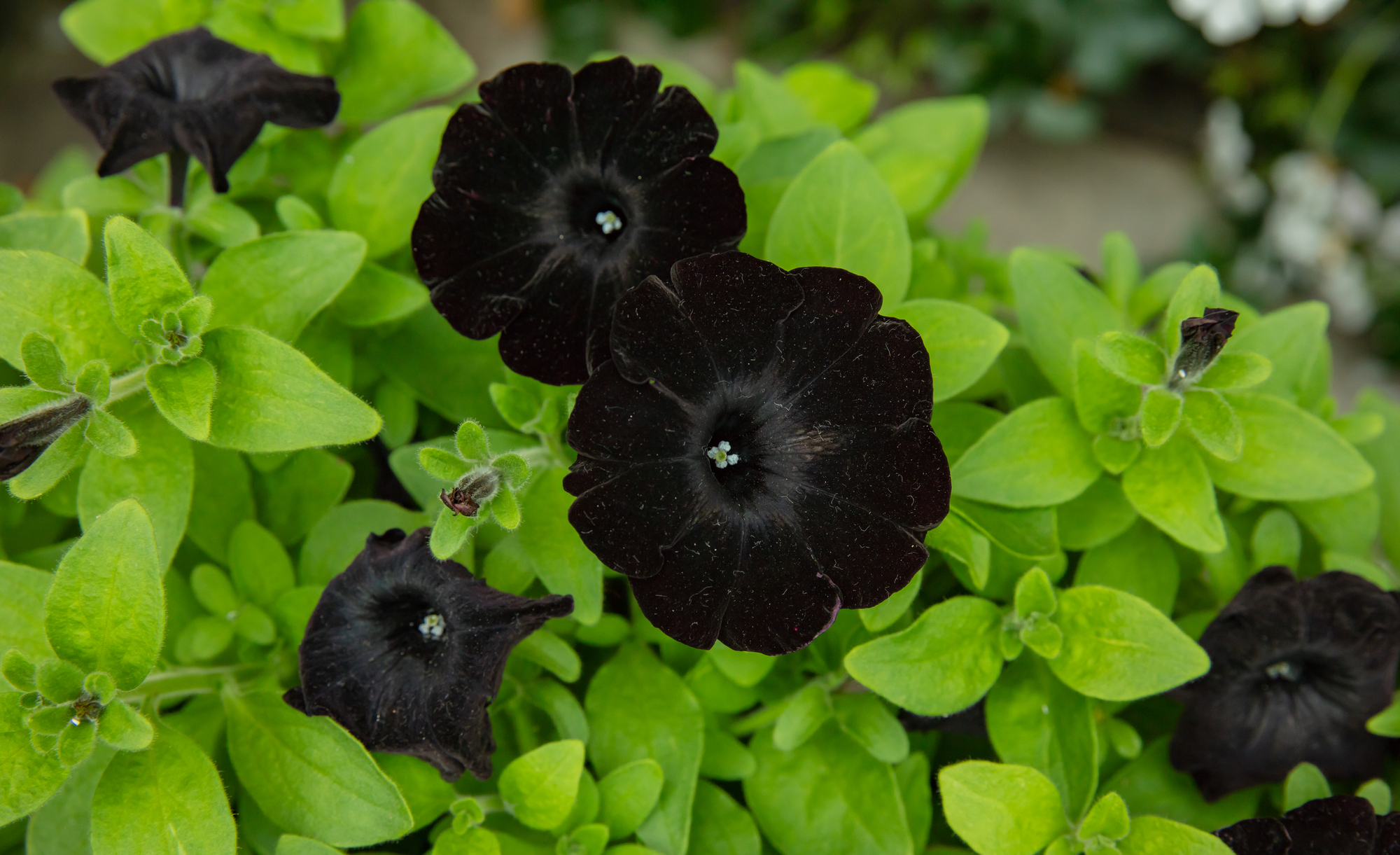
Gardeners on the hunt for gothic flowers will adore the velvety black petals of dark petunia cultivars, like ‘Sophistica Blackberry.’ Deadheading petunias when flowers start to fade encourages plants to rebloom, but you can boost flowering even more by feeding your petunias with these secret plant ingredients.
Best For: Containers, hanging baskets, garden borders
Hardiness Zones: Perennials in zones 9 to 11, annuals in cooler areas
5. Primroses (Primula vulgaris)

While primroses are mostly known for their brightly colored flowers, ‘Victorian Silver Lace Black’ primrose demands attention with dark petals ringed with creamy white edges. Whether you grow primroses in planters or garden beds, you can count on these cold hardy flowers to bloom early in spring when most perennials are still sprouting leaves.
Best For: Containers, garden borders
Hardiness Zones: 4 to 8
6. Hellebores (Helleborus spp.)

Another springtime bloomer, hellebores are sometimes called “Lenten roses” because they usually flower around Easter. Although hellebores produce some of the most unusual petal colors you can find, ‘Dark and Handsome,’ ‘Onyx Odyssey,’ and ‘Midnight Ruffles’ are musts if you’re looking for near-black perennials.
Best For: Early spring flowers, shade gardens
Hardiness Zones: 3 to 9
7. Persian Lilies (Fritillaria persica)
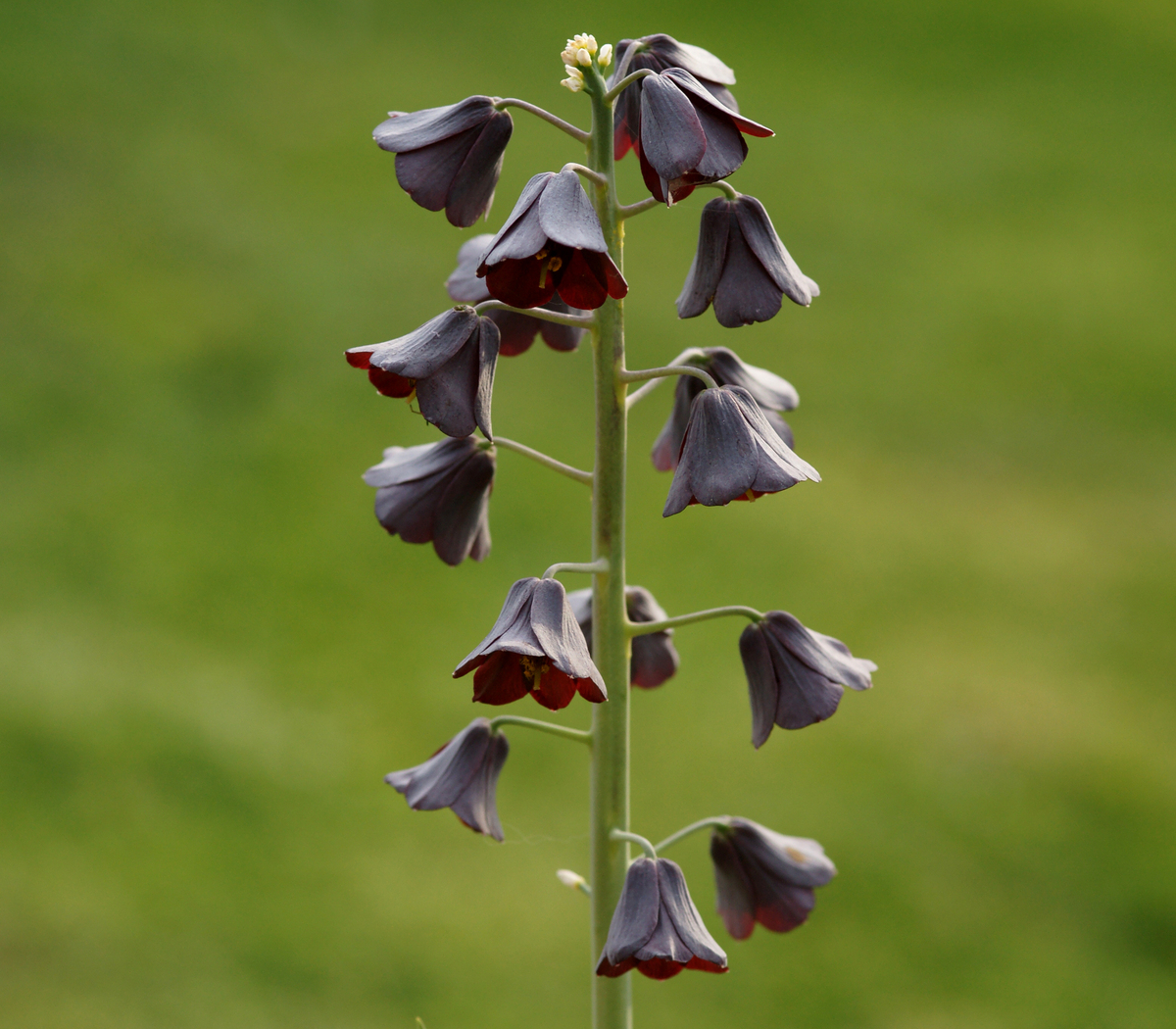
Persian lilies have an incredibly elegant look with tall spires of nodding, dark purple flowers that look black in most light. Like tulips, Persian lilies are grown from bulbs that are planted in fall and bloom in spring. But even better, Persian lilies are deer-resistant!
Best For: Wildlife gardens, spring flowers
Hardiness Zones: 4 to 8
8. Irises (Iris spp.)
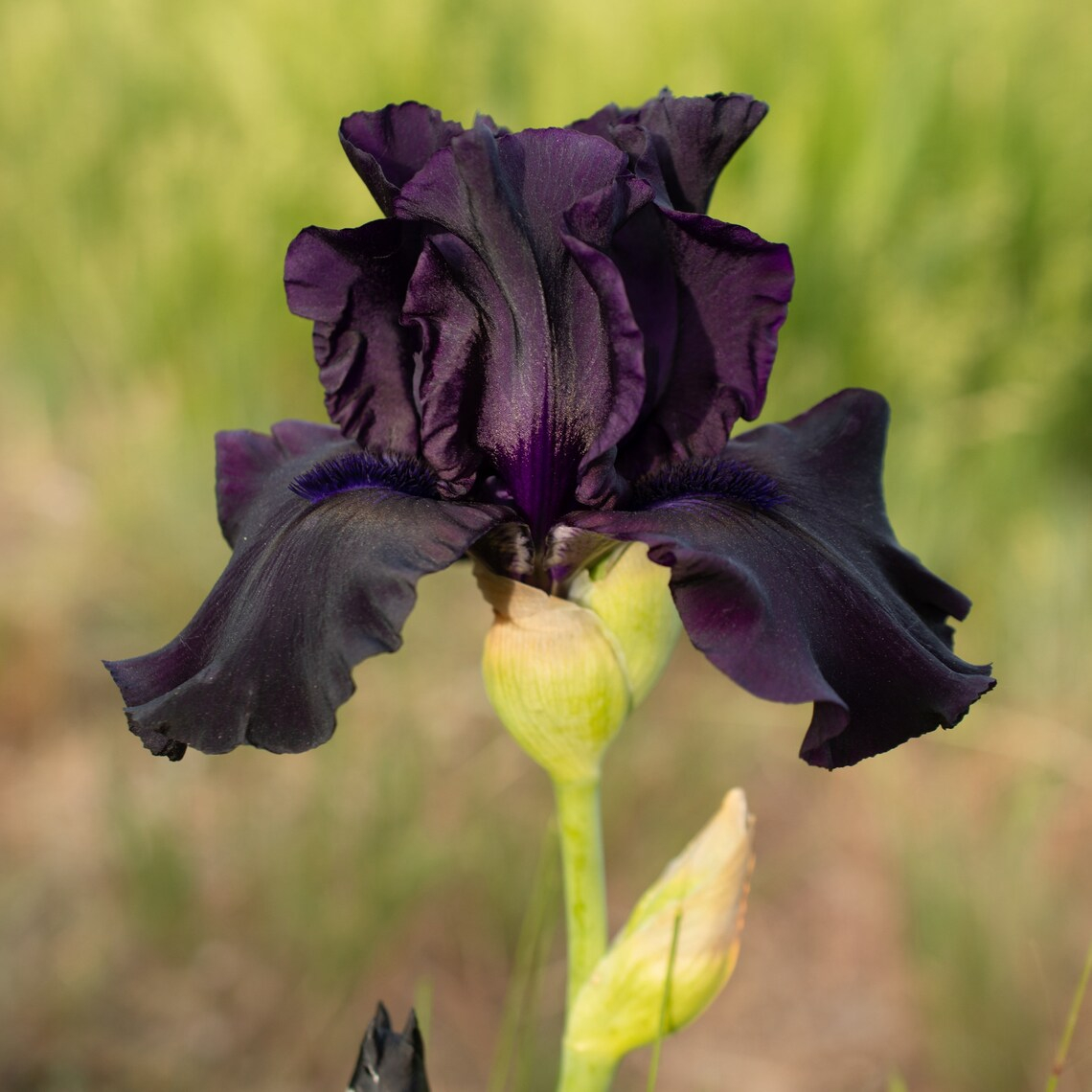
Purple, blue, and white irises are the most common, but you can find irises in lots of fabulous colors, including plants with nearly black blooms. Since many types of irises tolerate moist soil, you may want to plant irises in rain gardens and other soggy spots where other plants won’t take. Try varieties like ‘Raven Girl’ and ‘Black is Black’ for enchantingly dark blooms.
Best For: Rain gardens, pollinator habitats
Hardiness Zones: 3 to 9, most varieties
9. Poppies (Papaver paeoniflorum)
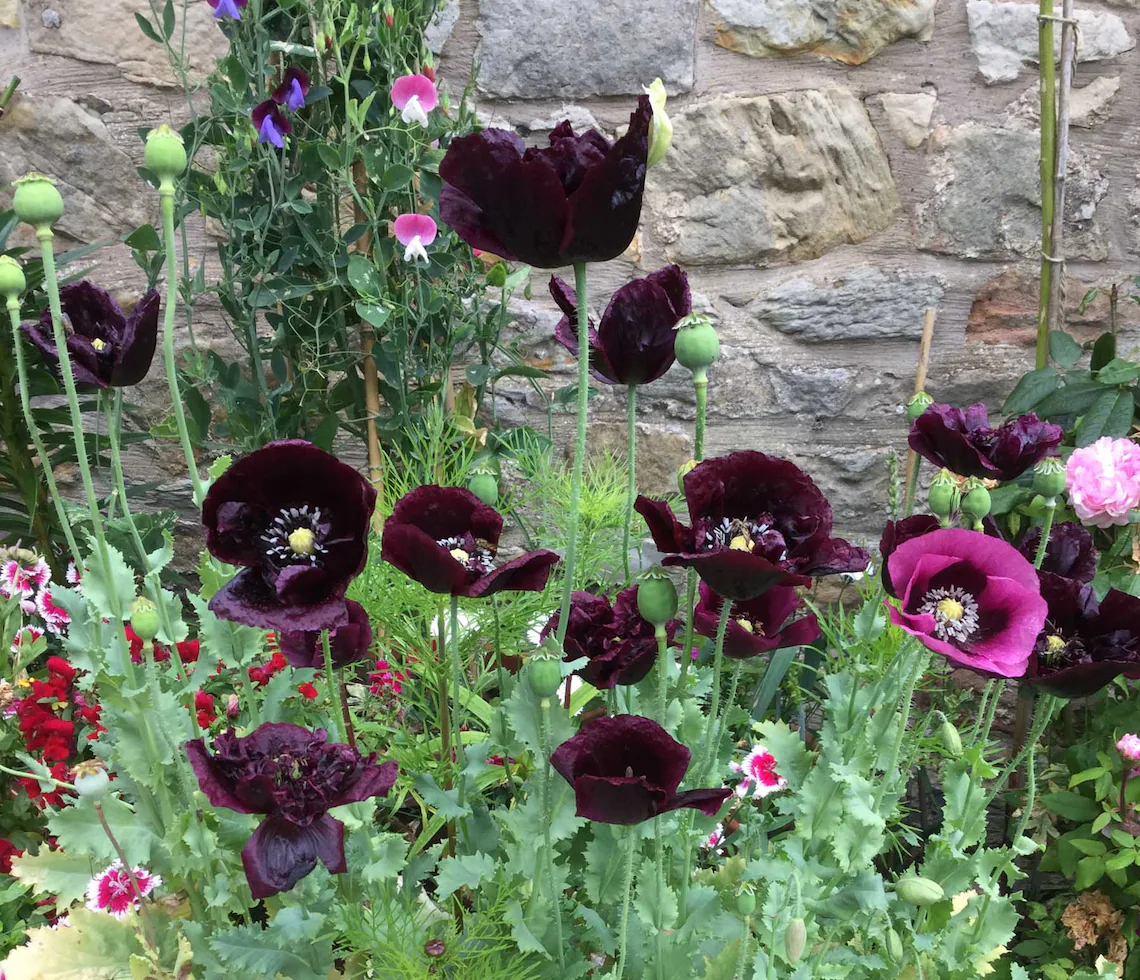
Poppies come in a wide range of colors, but ‘Black Peony’ poppies are an irresistible pick if you want to make bold bouquets with natural black flowers. Gather the ruffled, fully double blooms for fresh arrangements or shake the black flower seeds from the seed pods and use the dried pods in bouquets for texture! Poppies are particularly appealing in large plantings, but they can be interplanted with other black flowers for a more complex garden look.
Best For: Cut flowers, mass plantings
Hardiness Zones: 3 to 8
10. Calla Lilies (Zantedeschia spp.)
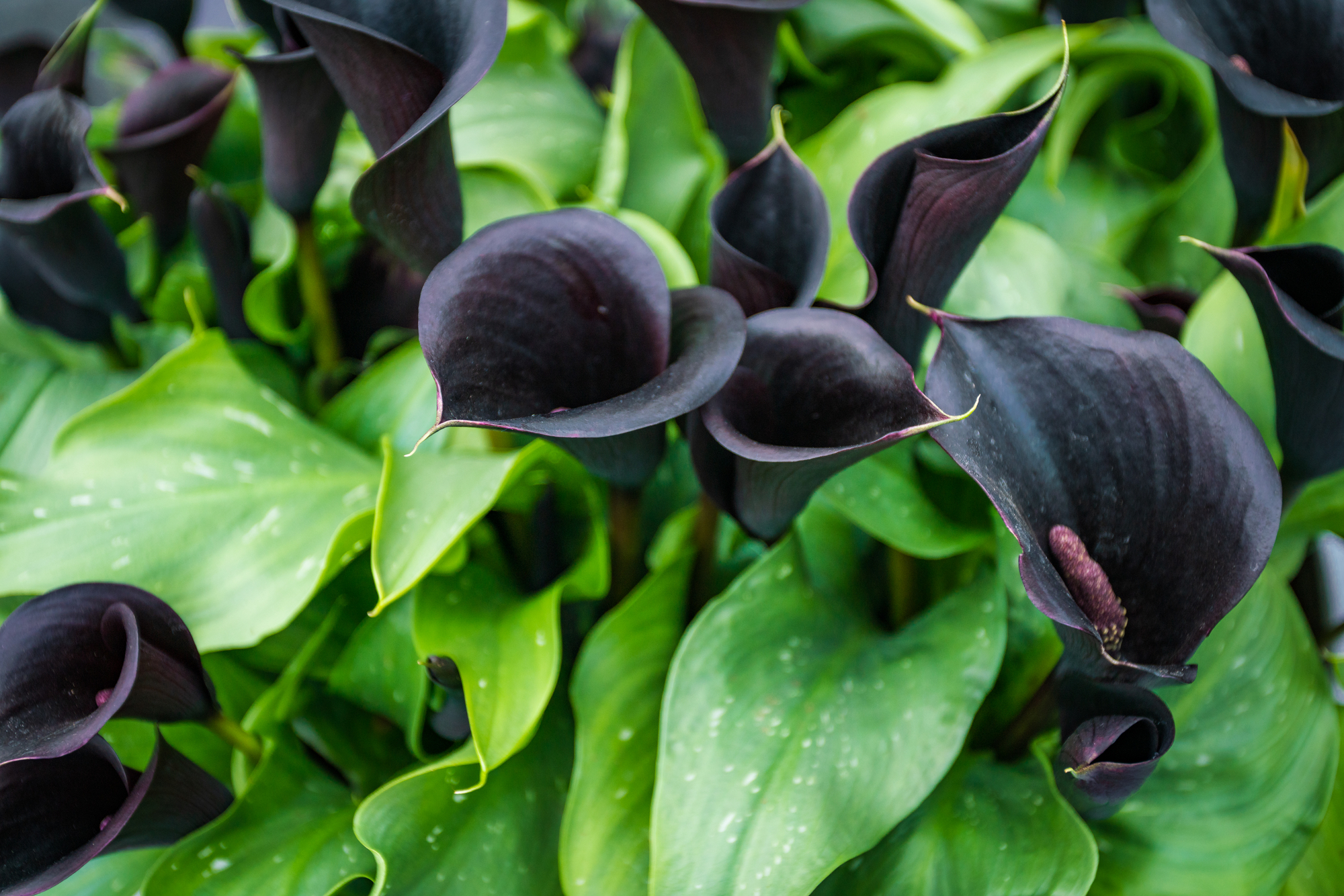
Dark-flowered calla lilies, like ‘Dark Star’ and ‘Odessa,’ are picture-perfect for a moody garden bed. Beyond their midnight flowers, these tropical looking plants delight with their speckled leaves and refined silhouette that looks right at home in bouquets and flower arrangements. While calla lilies can’t survive chilly winters outside, gardeners in cool climates can overwinter rhizomes indoors or grow these heat-lovers as annuals.
Best For: Garden borders, containers, cut flowers
Hardiness Zones: Perennials in zones 8 to 10
11. Columbines (Aquilegia vulgaris)
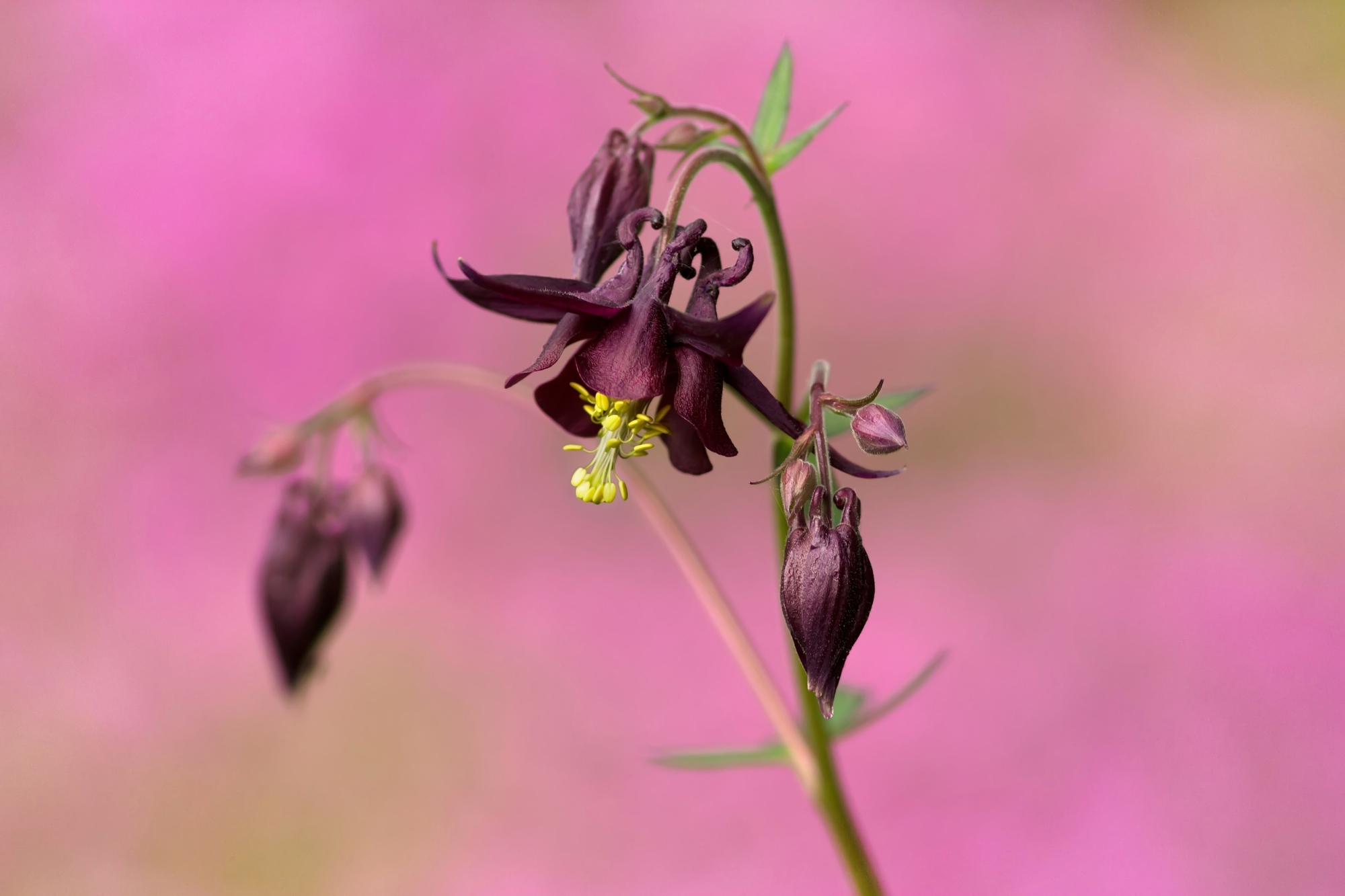
Columbines are one of the most popular types of wildflowers for shade gardens and they famously attract hummingbirds with their nectar-filled blooms. For a moody and elegant feel, try out ‘Black Barlow,’ a dark charmer with nodding, deep crimson flowers. If you don’t deadhead the spent flowers, this easy going plant self-sows, too.
Best For: Spring flowers, shade gardens, cut flowers
Hardiness Zones: 3 to 9
